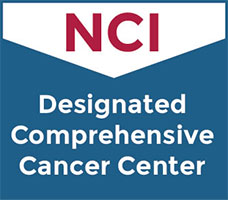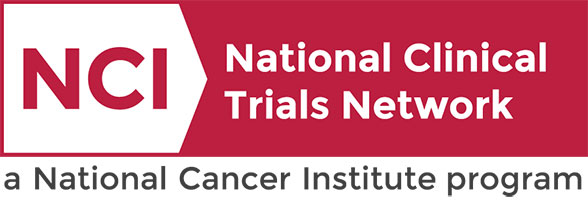Testing the Combination of New Anti-cancer Drug Peposertib with Avelumab and Radiation Therapy for Advanced/Metastatic Solid Tumors and Hepatobiliary Malignancies
This phase I/II trial studies the best dose and side effects of peposertib and to see how well it works with avelumab and hypofractionated radiation therapy in treating patients with solid tumors and hepatobiliary malignancies that have spread to other places in the body (advanced/metastatic). Peposertib may stop the growth of tumor cells by blocking some of the enzymes needed for cell growth. Immunotherapy with monoclonal antibodies, such as avelumab, may help the bodys immune system attack the cancer, and may interfere with the ability of tumor cells to grow and spread. Hypofractionated radiation therapy delivers higher doses of radiation therapy over a shorter period of time and may kill more tumor cells and have fewer side effects. Giving peposertib in combination with avelumab and hypofractionated radiation therapy may work better than other standard chemotherapy, hormonal, targeted, or immunotherapy medicines available in treating patients with solid tumors and hepatobiliary malignancies.
Not Available
I/II
Heumann, Thatcher
NCT04068194
VICC-NTGIT24020
A Phase 1 Study of AB521 in Renal Cell Carcinoma and Other Solid Tumors
Multiple Cancer Types
The purpose of this study is to evaluate the safety and tolerability of AB521 when taken
alone in participants with advanced solid tumor malignancies and clear cell renal cell
carcinoma (ccRCC).
alone in participants with advanced solid tumor malignancies and clear cell renal cell
carcinoma (ccRCC).
Kidney (Renal Cell),
Phase I
I
Rini, Brian
NCT05536141
VICC-DTURO23168P
Avelumab or Hydroxychloroquine with or without Palbociclib for the Treatment of Stage II-III Breast Cancer, PALAVY Study
Breast
Breast
This phase II trial investigates the effect of avelumab or hydroxychloroquine sulfate with or without palbociclib in treating patients with stage II-III breast cancer that is positive for disseminated tumor cells (DTCs) after curative therapy. DTCs are breast cancer cells that are asleep (dormant) in the bone marrow. There are multiple ways in which these cells stay alive, and three of these mechanisms are inhibited by the drugs in this trial. First, dormant cancer cells need a protein signal pathway involving CDK 4/6 to start dividing once they wake up in order to survive as an active cancer cell. Palbociclib works by blocking the CDK 4/6 protein and by doing so may limit the dormant cancer cell from being able to survive. In addition, palbociclib may also help both of the other drugs in the trial to work better. Second, dormant cancer cells also use a process called autophagy to generate their own nutrition, which can allow them to stay asleep. Hydroxychloroquine has been shown to block autophagy, which leads to starvation of the cells. Third, dormant cancer cells are able to hide from the bodys immune system. The immune system sends a type of cell called T cells throughout the body to detect and fight infections and diseasesincluding cancers. One way the immune system controls the activity of T cells is through the PD-1/PD-L1 (programmed cell death protein-1) pathway. However, some cancer cells hide from T-cell attack by taking control of the PD-1/PD-L1 interaction and this stops T cells from attacking cancer cells. Avelumab is an antibody designed to block the PD-1/PD-L1 pathway and helps the immune system in detecting and fighting dormant cancer cells. Because palbociclib, hydroxychloroquine, and avelumab work on the mechanisms that keep the dormant cells alive, taking one or a combination of these drugs may be able to eliminate DTCs.
Breast
II
Reid, Sonya
NCT04841148
VICCBRE2161
A Study of BMS-986340 as Monotherapy and in Combination With Nivolumab or Docetaxel in Participants With Advanced Solid Tumors
The purpose of this study is to assess the safety, tolerability, and recommended dose(s) of
BMS-986340 as monotherapy and in combination with nivolumab or docetaxel in participants with
advanced solid tumors. This study is a first-in-human (FIH) study of BMS-986340 in
participants with advanced solid tumors.
BMS-986340 as monotherapy and in combination with nivolumab or docetaxel in participants with
advanced solid tumors. This study is a first-in-human (FIH) study of BMS-986340 in
participants with advanced solid tumors.
Not Available
I/II
Berlin, Jordan
NCT04895709
VICC-DTPHI23183
Evaluation of EBUS-TBNA versus EBUS-TBNA plus Transbronchial Mediastinal Cryobiopsy to Obtain Adequate Tissue Samples for Next Generation Sequencing, META-Gen Trial
This phase III trial compares how well endobronchial ultrasound-transbronchial needle aspiration (EBUS-TBNA) versus EBUS-TBNA plus transbronchial mediastinal cryobiopsy works to obtain adequate tissue samples for next generation sequencing (NGS). During usual care, if there is suspicion of cancer, a procedures known as an EBUS-TBNA is done to take sample of lymph nodes to evaluate for cancer spread. If there is suspected cancer in the lymph nodes, multiple samples are taken for molecular testing (NGS) to help guide treatment decisions. It requires a certain amount of tissue to send for the molecular testing which can be achieved with EBUS-TBNA about 70% of the time. Researchers want to find out if adding a biopsy tool currently used in usual care, known as a cryoprobe, can acquire more tissue for molecular analysis. The cryoprobe uses a freezing technique to biopsy and can potentially gather larger and higher quality tissue samples than the standard EBUS-TBNA method.
Not Available
III
Maldonado, Fabien
NCT06105801
VICC-VDTHO23177
Intraoperative Identification and Stimulation of the Glossopharyngeal Nerve
Head/Neck
Head/Neck
This clinical trial evaluates different nerve patterns to the throat muscles (stylopharyngeus and pharyngeal constrictor) and what they look like in different patients by measuring and photographing them in the neck during surgery when the nerves are dissected (separated into pieces) as part of regular surgical care. Researchers think that some of the muscles in the neck might be useful for treating a condition called obstructive sleep apnea (OSA). This happens when muscles of the throat relax at night and the airway becomes blocked. Blockage of airflow leads to drops in oxygen levels and can disturb sleep by forcing a persons brain to wake to restore airway muscles so they can breathe. This trial may help researchers provide a new way to treat OSA that may be better than the current standard ones.
Head/Neck
N/A
Ceremsak, John
NCT05754216
VICC-EDHAN23196
MRI and 18F-Fluoromisonidazole PET/CT Scan for Assessing Tumor Hypoxia and Guiding Adaptive Radiation Therapy in Patients With Head and Neck Cancer or Brain Metastases
Miscellaneous
Miscellaneous
This clinical trial is studying how well magnetic resonance imaging (MRI) in combination with 18F-fluoromisonidazole (18F-FMISO) positron emission tomography (PET)/computed tomography (CT) scans works in assessing a decrease in the amount of oxygen (hypoxia) in tumor cells and in guiding adaptive radiation treatment in patients with head and neck cancer or cancer that has spread to the brain from where it first started (brain metastasis). Both head and neck cancer and brain metastases can be treated with radiation. Previous research studies have shown that the amount of oxygen that goes towards cancer cells prior to their radiation treatments predicts how the cancer cells will respond to radiation treatment. MRI is a type of imaging technique that uses radio waves and large magnets to produce detailed images of areas inside the body. 18F-FMISO is a radioactive substance that binds to hypoxic tumor cells and emits radiation, allowing the tumor cells to be visualized using PET/CT, which is an imaging technique that combines PET and CT in a single machine. It is used to make detailed, computerized images of inside the body. By combining MRI with 18F-FMISO PET/CT, researchers may be able to develop an MRI sequence that can be used to evaluate hypoxia in tumor cells and predict response to treatment in patients with head and neck cancer or brain metastases.
Miscellaneous
Early I
Osmundson, Evan
NCT05996432
VICC-EDMDT23195
Enhanced Recovery After Surgery for Pain Management in Patients with Extremity Soft Tissue Sarcoma
Sarcoma
Sarcoma
This clinical trial studies the effect of the ERAS pain management method in managing pain after surgery in patients with extremity soft tissue sarcoma. Enhanced Recovery After Surgery, or ERAS, is a pain management method that places emphasis on managing risk factors (things like smoking, nutrition and fitness), using multiple types of pain control, and early movement, with the goal of improving patient outcomes. ERAS has been shown to reduce the length of time some patients stay in the hospital, reduce complications from surgery, and even lower costs of some surgeries. ERAS is designed may help cut down on the use of these narcotics in managing the pain of surgery patients. The purpose of this trial is to demonstrate that ERAS is safe and effective for patients having surgery to treat their sarcoma. Specifically, this study will look at using a non-narcotic pain management program that includes other methods of managing the pain of sarcoma surgery patients.
Sarcoma
N/A
Lawrenz, Joshua
NCT04461171
VICCSAR2020
Studying the Effect of Levocarnitine in Protecting the Liver from Chemotherapy for Leukemia or Lymphoma
Multiple Cancer Types
This phase III trial compares the effect of adding levocarnitine to standard chemotherapy vs. standard chemotherapy alone in protecting the liver in patients with leukemia or lymphoma. Asparaginase is part of the standard of care chemotherapy for the treatment of acute lymphoblastic leukemia (ALL), lymphoblastic lymphoma (LL), and mixed phenotype acute leukemia (MPAL). However, in adolescent and young adults (AYA) ages 15-39 years, liver toxicity from asparaginase is common and often prevents delivery of planned chemotherapy, thereby potentially compromising outcomes. Some groups of people may also be at higher risk for liver damage due to the presence of fat in the liver even before starting chemotherapy. Patients who are of Japanese descent, Native Hawaiian, Hispanic or Latinx may be at greater risk for liver damage from chemotherapy for this reason. Carnitine is a naturally occurring nutrient that is part of a typical diet and is also made by the body. Carnitine is necessary for metabolism and its deficiency or absence is associated with liver and other organ damage. Levocarnitine is a drug used to provide extra carnitine. Laboratory and real-world usage of the dietary supplement levocarnitine suggests its potential to prevent or reduce liver toxicity from asparaginase. The overall goal of this study is to determine whether adding levocarnitine to standard of care chemotherapy will reduce the chance of developing severe liver damage from asparaginase chemotherapy in ALL, LL and/or MPAL patients.
Leukemia,
Pediatric Leukemia
III
Not Available
NCT05602194
VICC-NTPED23475
Impact of Indwelling Tunneled Pleural Drainage Systems (Gravity or Vacuum Based) on Pain in Patients with Recurrent Pleural Effusions
Lung
Lung
This trial studies the impact of indwelling tunneled pleural drainage systems (gravity or vacuum based) on pain in patients with plural effusion that has come back (recurrent). Vacuum drainage and gravity drainage are two commonly used drainage methods. Studying the best drainage methods may help future patients undergoing indwelling tunneled pleural catheter placement.
Lung
N/A
Maldonado, Fabien
NCT03831386
VICCTHO19118


